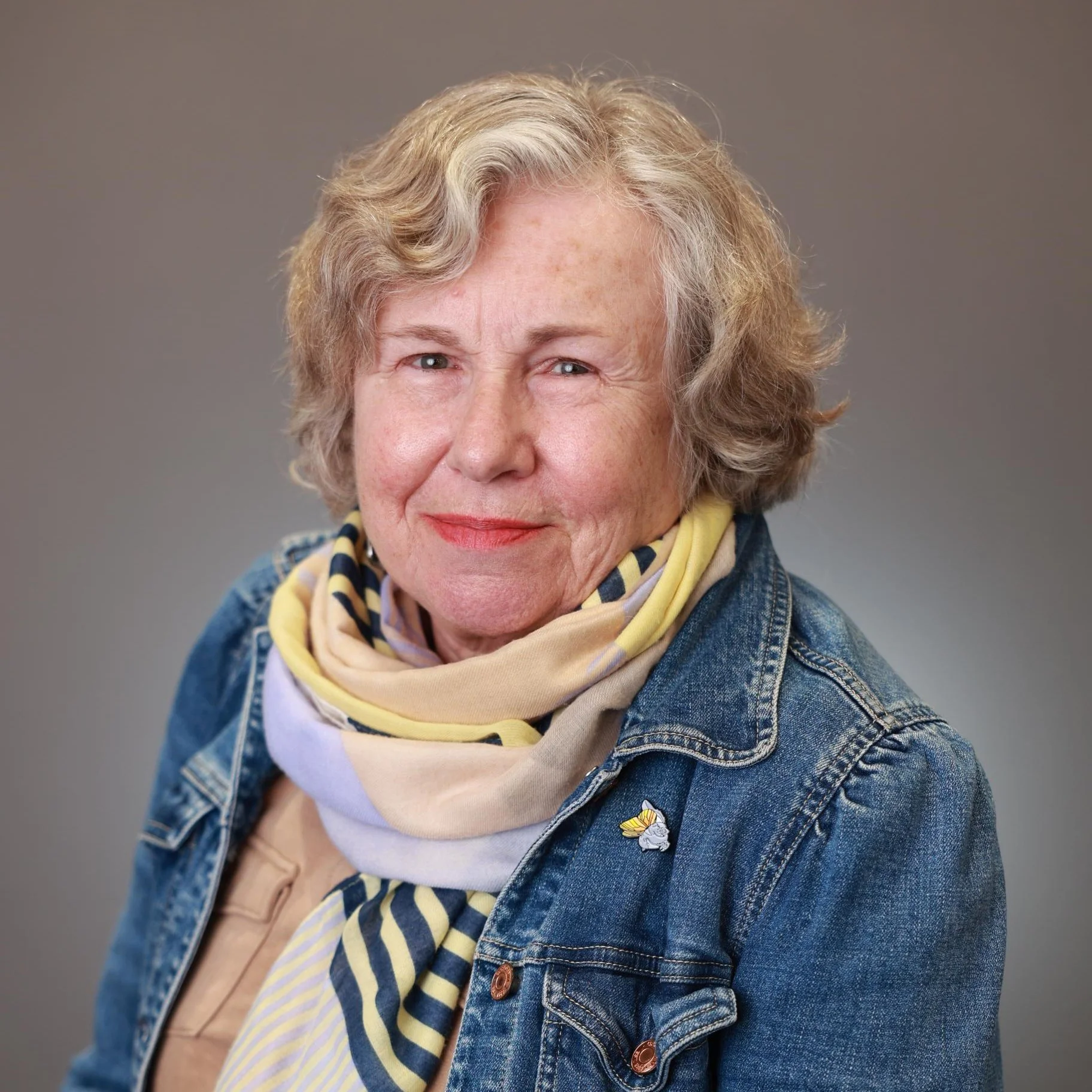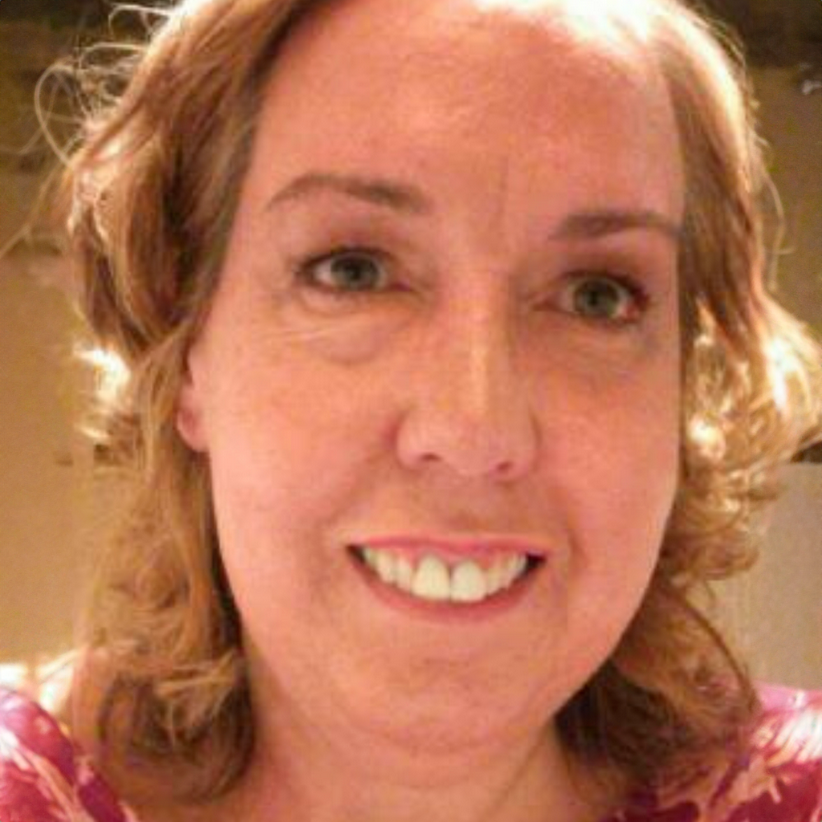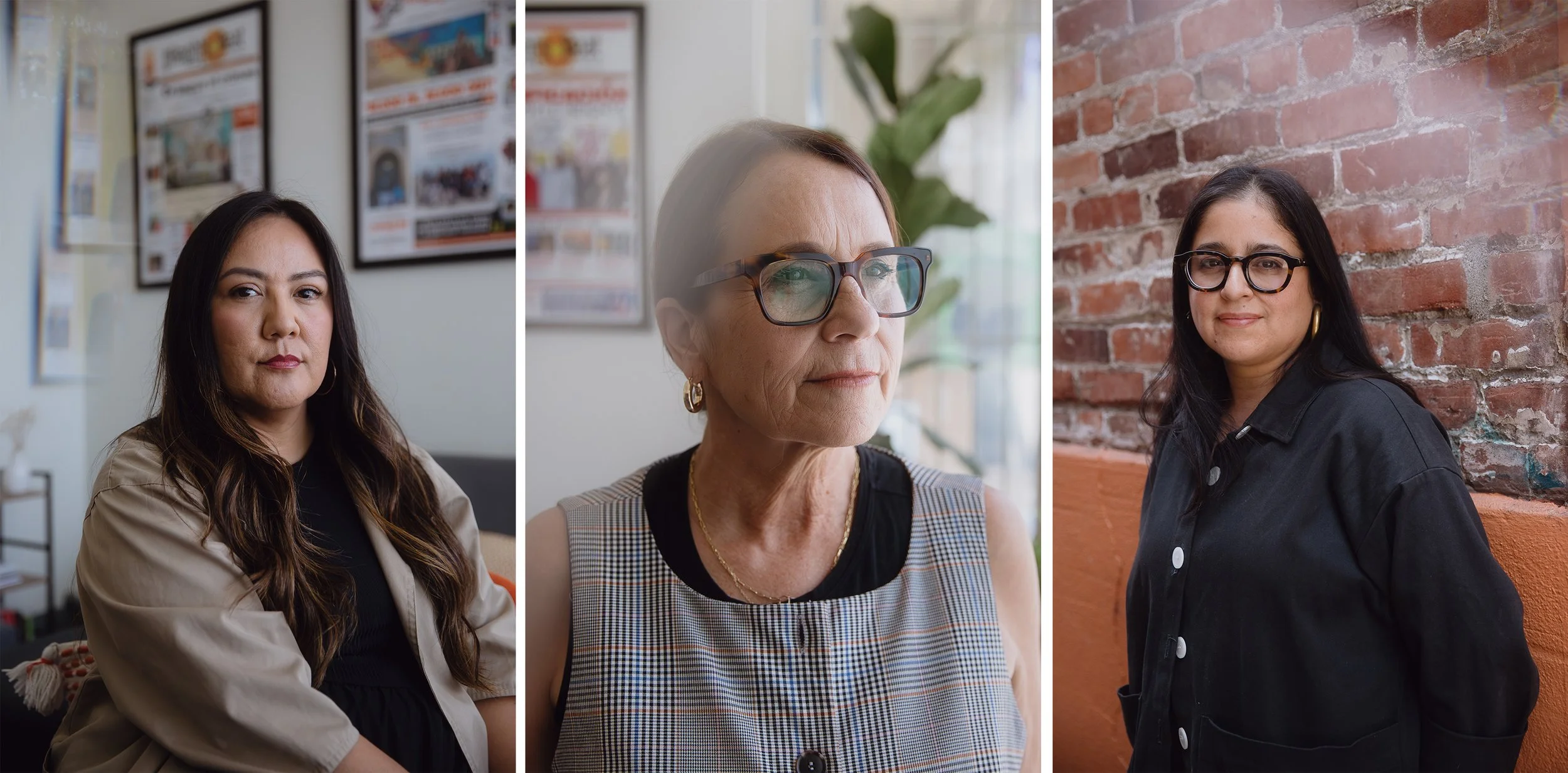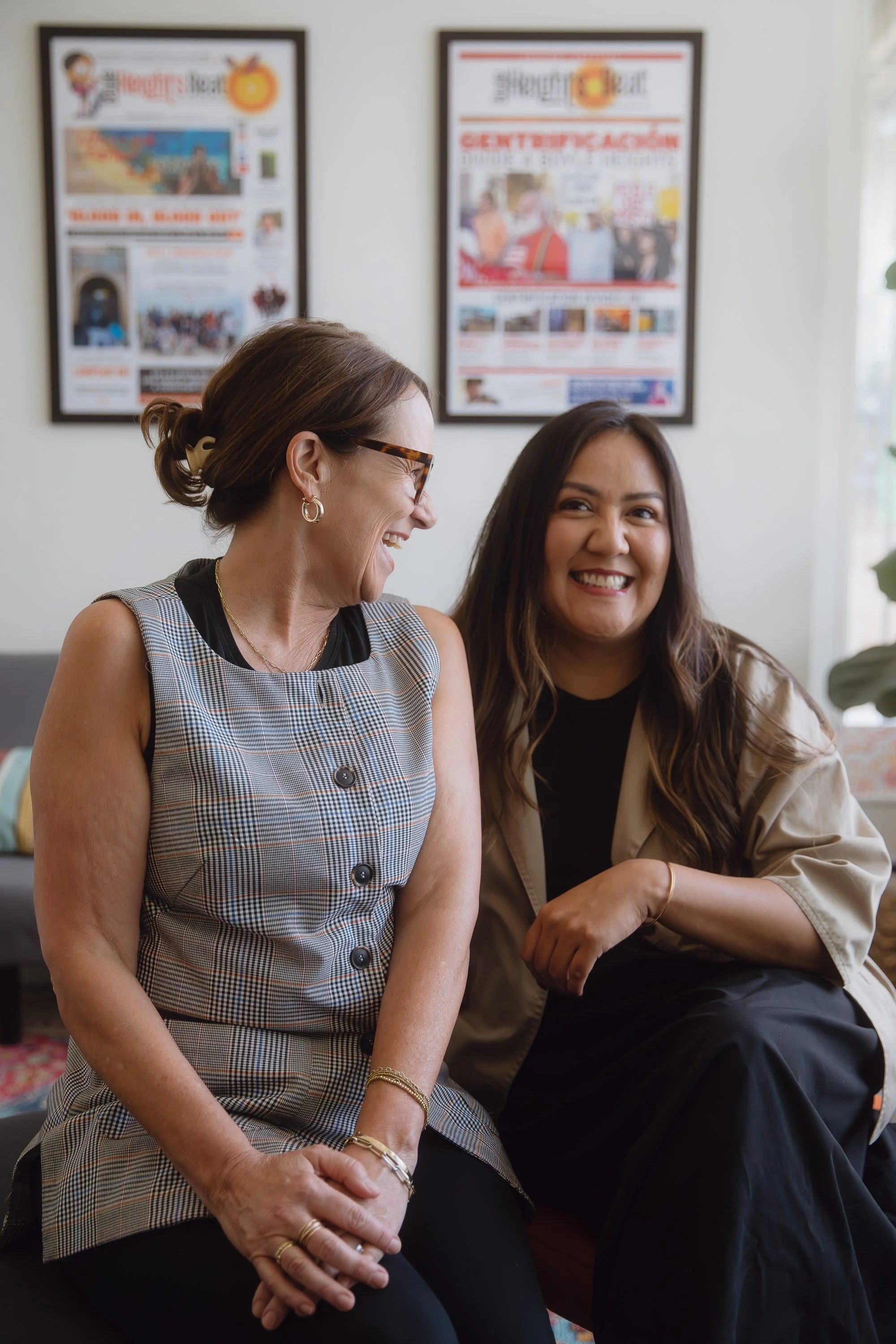Boyle Heights Beat/Pulso de Boyle Heights: Community Newsroom with a Strong Pulse
Senior editor Jessica Pérez (left) and senior reporter Alejandra Molina of the Boyle Heights Beat work out of the newsroom in the neighborhood of Boyle Heights in Los Angeles, Calif., on July 23, 2025. Photo by Zaydee Sanchez for palabra
No Paywall, No Pretense: Where Young Voices Shape the News — and the Future.
Editor’s Note: Research funding for this article was provided by the UC Irvine Dream Center and the UC Irvine Center for Liberation, Anti-Racism, and Belonging.
Local news coverage is vital in these times. Launched in 2010, the bilingual community newsroom Boyle Heights Beat/Pulso de Boyle Heights is celebrating its quinceañero! The nonprofit newsroom, which began as a youth-powered project supported by the University of Southern California Center for Health Journalism and the Spanish-language daily La Opinión in Los Angeles, appears quarterly in print, daily online, and has grown into a dynamic collaboration between 28 youth reporters (all of them high schoolers), three professional reporters, one social media producer, and two editors reporting on stories such as local school closures during the January wildfires and the activities of newly elected Los Angeles City Council member Ysabel Jurado.
Youth reporters work in cohorts devoted to multimedia, photography, and print or text. In 2018, they started a monthly podcast, Radio Pulso, crafted in a storefront space near the newsroom, and nowadays they put together podcasts in their own studio, located in the paper’s new building in Boyle Heights in East LA.
Stephanie Pérez, 18, joined Boyle Heights Beat when she was a freshman at Francisco Bravo High School in East Los Angeles. The Beat became her “safe space,” she tells palabra. “It helped me become a better communicator … I’m very introverted, but I did kind of become more extroverted. You know, having to do interviews and being an active listener, not to forget to do follow-up questions … It was that first space where I felt I could really speak out and won’t be brushed off as a kid.”
While at The Beat, Stephanie became more involved in her community; she enjoyed working with Radio Pulso and was able to pitch and write her own stories on food deserts, library closures, and local murals, which provided “an intergenerational view on la Virgen de Guadalupe.” High school students can apply for internships online. The average internship lasts 18 weeks, and interns are paid, ranging from $25 for a photo to $150 for a full feature article. Stipends can also be earned for moderating events and hosting and editing podcasts, according to Christine Kelley, Managing Director of Student Journalism and Community Engagement.
Staff members in the podcast room at Boyle Heights Beat. Photo by Zaydee Sanchez for palabra
Images taken by student journalists decorate the hallways of the Boyle Heights Beat newsroom. Photo by Zaydee Sanchez for palabra
An Urban Anchor
As a socially and physically inviting space, Boyle Heights Beat/Pulso de Boyle Heights serves as what Mexican-American scholar Natalia Molina has called an “urban anchor.” “The fact that our newsroom is a storefront really provides that opportunity for people in the community to identify it, knock on the door, ask for a newspaper, and come share a story tip,” says senior editor Jessica Pérez.
Adds senior reporter Alejandra Molina, “We heard that ICE had been in a metro station [in Boyle Heights] and we were trying to verify that, and so we called DHS, we wanted to see if it was ICE, if it was HSI … but Centro CSO [a local non-profit] was at the scene, and they did get it, they did encounter a vehicle that looked like it was a federal agent’s, and they basically ran them out, and after that happened – it was near Mariachi Plaza, which is near our office – Centro CSO just walked in, organizers who were at the scene, and they’re like ‘Hey, we just came back from this, this is what we know’ ... I think because it’s a very community-oriented newsroom, organizations do feel that level of trust.” Molina started as a youth mentor and worked for a time at De Los, the Los Angeles Times’ vertical focusing on Latino issues.
Pérez mentions that as a community-oriented newsroom, The Beat is devoted to getting residents’ voices heard and covering the stories that readers would like to see, and what could affect them the most, such as: the city budget crisis, housing and homelessness, transparency from the Los Angeles United School District and the county government, and the impact on the community of new federal immigration policies.
Molina noted that since June 6, when ICE raids intensified, The Beat has had to set aside other local stories to cover the raids, capture how local organizations and “community defenders” are assisting with ICE detection, and provide online guides to legal rights with the advice of immigration attorneys.
From left: Senior Editor Jessica Pérez, Student Journalism and Community Engagement Managing Director Christine Kelly, Senior Reporter and Journalist Mentor Alejandra Molina. Photos by Zaydee Sanchez for palabra
Community reporter Andrew López, who joined The Beat through the California Local News Fellowship at UC Berkeley, has been covering the impact of raids on local businesses, including street vendors, “which is a huge part of the east side.” López says he enjoys using photography to “really emphasize how a story is told [and] to show people what our community looks like.”
To get in touch with its readership, the newsroom has handed out media kits to its community organization partners (such as Proyecto Pastoral, Las Fotos Project, Latino Equity Alliance, Self-Help Graphics, and Legacy LA) to survey what residents wish to know more about, what they expect from their councilmembers, says Kelley.
This outreach is reflected in their reporting style: A recent story involved community reporters interviewing people on the street about the presidential election, followed by youth reporters collaborating with community reporters to create a podcast. “One thing that I realized while working at other newspapers that have a bilingual sister paper is that the bilingual sister paper is usually looked at as an afterthought, and it’s not really integrated within the main newsroom. So I do think that there’s a broad community that’s not being touched, that’s not being really centered,” says Molina. The Beat’s dedication to bilingualism enables them to feature voices that might not otherwise be heard, such as those of older residents, and to craft timely Spanish-language messages for their robust Instagram account.
Copies of the Boyle Heights Beat newspaper are available for free at Picaresca Barra de Café in Boyle Heights. Photo by Zaydee Sanchez for palabra
Building Trust
“You basically can’t create an effective news and information service unless you have a solid foundation of trust in the community,” said Executive Editor Kristen Muller. Reflecting on what makes Boyle Heights Beat/Pulso de Boyle Heights unique, Muller told palabra, “What makes it so effective is that it is homegrown. Like the fact that the reporters and the entire staff are either from Boyle Heights or the immediate surrounding neighborhoods … They are seen as members of the community who are now contributing through journalism, not journalists who cover the community. [Additionally], they have this really solid ongoing feedback loop with community leaders, schools, organizations … There’s this shared idea of we all need to put out good information and you don’t have to be a journalist to be doing that work.”
In Muller’s view, the student journalism program is also vital to building this trust: Families can recognize the kids participating in the internship program as neighbors.
Andrew López (foreground) and other reporters from the Boyle Heights Beat work out of the newspaper's office. Photo by Zaydee Sanchez for palabra
Creating a Path to Citizens’ Media
“We teach (our young reporters) that … through journalism you can uplift voices in the community without taking a side,” says Managing Director Christine Kelley.
A core mission of Boyle Heights Beat/Pulso de Boyle Heights is to foster civic engagement and to treat reporting staff and readership alike as active citizens. For example, there are candidates’ forums where community members can directly address candidates about their positions. Last October, during a contentious campaign for an LA City Council seat, the news outlet hosted a well-attended forum with local district council candidates in advance of the November election.
At the same time, there is an effort to keep news relevant at the neighborhood level. “It has to be not only city government, not only the big issue stories, but also … where can you go to get brunch on Mother’s Day in Boyle Heights? Neighborhood concerns are also kept in mind when considering how to cover local crime – the newsroom is selective, taking into careful account what is truly ‘of service to the community,’” says Jessica Pérez.
The intersection of 1st and Soto streets in Boyle Heights. The Beat, a community-focused newsroom, amplifies local voices and covers stories that matter most to residents. Photo by Zaydee Sanchez for palabra
Looking Ahead
At 15, Boyle Heights Beat/Pulso de Boyle Heights has much to celebrate. The youth program has been featured in the curriculum of local schools. Several youth reporters are prepared to work as “LA documenters,” taking notes during meetings with elected officials and neighborhood councils to help generate ideas for stories.
And the newsroom has created a professional pipeline for its own staff, several of whom, including its senior editor, were previously involved in the youth program.
Stephanie Pérez will be studying journalism at Cal Poly Pomona this fall. Because it is also available online, The Beat’s readership extends from East Los Angeles to other U.S. jurisdictions, and even to Mexico, as people who have moved out of the Los Angeles area maintain “a very big attachment and pride to the neighborhood,” says Jessica Pérez.
Support the voices of independent journalists.
|
Local leaders are responding to the news coverage, and Boyle Heights Beat/Pulso de Boyle Heights was recently nominated for numerous LA Press Club SoCal Journalism Awards for its coverage last year.
Significantly, it has become a part of the Los Angeles Local News Initiative, a new nonprofit organization that, among others, operates community newsrooms and collaborates with local media and university partners to bring more journalism to the Los Angeles area.
Boyle Heights Beat’s expertise in centering community first and supporting student reporters will aid the launch of new community newsrooms by the LA Local News Initiative across the region. As Jessica Pérez explains, “Our mission here is to inform, but it’s also to connect and uplift: We want to give people the news, and we want to hold power to account, but we also want to build community among people, to connect them with their neighbors.”
Christine Kelly and Jessica Pérez at the Boyle Heights Beat newsroom on July 23, 2025. Photo by Zaydee Sanchez for palabra
—
Dariela Espinoza López provided research assistance.
Catherine L. Benamou is Professor of Film and Media Studies at the University of California, Irvine, specializing in Latin American and Latinx film and media. She is working on a book on Latinx Media and the Pursuit of Social Justice in the Los Angeles metropolitan area. She is an active member of the NAHJ Los Angeles chapter. @luzaccion.bsky.social
Zaydee Sanchez is a Mexican American visual storyteller, documentary photographer, and writer from Tulare, California, in the San Joaquin Valley. She seeks to highlight underreported communities and overlooked narratives, with a focus on labor, gender, and displacement. Zaydee is an International Women's Media Foundation grantee and a 2021 USC Annenberg Center for Health Journalism Fellow. Her work has been published in Al Jazeera, National Geographic, and NPR, among others. She lives in Los Angeles. @zaydee.s
Patricia Guadalupe, raised in Puerto Rico, is a bilingual multimedia journalist based in Washington, D.C., and is the co-managing editor of palabra. She has been covering the capital for both English- and Spanish-language media outlets since the mid-1990s and previously worked as a reporter in New York City. She’s been an editor at Hispanic Link News Service, a reporter at WTOP Radio (CBS Washington affiliate), a contributing reporter for CBS Radio network, and has written for NBC News.com and Latino Magazine, among others. She is a graduate of Michigan State University and has a Master’s degree from the Graduate School of Political Management at George Washington University. She is the former president of the Washington, D.C., chapter of NAHJ and is an adjunct professor at American University in the nation’s capital and the Washington semester program of Florida International University. @PatriciagDC














